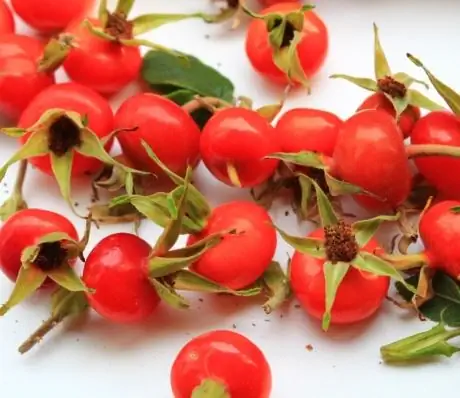- Author Rachel Wainwright [email protected].
- Public 2023-12-15 07:39.
- Last modified 2025-11-02 20:14.
Hake
Hake is a marine fish belonging to the Cod family. The length of an average individual rarely exceeds 70 cm, however, it is not less than 20 cm. The weight of the fish reaches 3 kg. The hake has an elongated body, two fins - short and long, located on the back. The back is grayish black, while the side and abdomen are silvery gray. The fish has a tender, lean white meat. There are few bones, and the fillet plates are well separated from the existing ones during cooking.
The ratio of BJU in the product

Source: depositphotos.com How to burn 86 kcal?
| Walking | 22 minutes |
| Jogging | 10 min. |
| Swimming | 7 minutes |
| A bike | 12 minutes |
| Aerobics | 17 minutes |
| Household chores | 29 minutes |
The main food for hake in the first years of life is small shrimp and calanus. Sexually mature fish becomes a predator and prefers pelagic fish, which include herring, mackerel, and others, as well as large invertebrates, including squid and shrimp, as food.
Hake hibernates at depths exceeding 20 m.
Composition, nutritional value and calorie content of hake
Hake contains many useful and necessary for the body macro- and microelements: fluorine, calcium, phosphorus, sodium, sulfur, magnesium, iodine, iron, zinc, copper, chlorine, cobalt, chromium, molybdenum, nickel and manganese. Along with this, the vitamin content is high. Vitamins PP, C, A, E, B2, B1, B9, B6 reach the highest concentration in fish. In addition, fish is a storehouse of omega-3 fatty acids, the content of which is highest in hake caviar. It is noteworthy that hake caviar holds the record for the content of this useful substance.
This sea fish has no carbohydrates at all, which makes it possible to include it in a diet that provides a minimum intake of carbohydrate compounds. It contains about 17 g of protein and 2.2 g of fat, while the calorie content of hake is quite low - only 86 Kcal per 100 g.
Useful properties of hake
Low-calorie hake, lean, highly digestible meat rich in protein and vitamins are the reasons why fish is recommended for dietary nutrition.
The complex of vitamins contained in hake helps to regulate and maintain metabolism, as well as promotes the elimination of toxins and helps in the prevention of cancer, being an excellent antioxidant.
For diseases of the skin, mucous membranes and thyroid gland, the benefits of hake, containing a variety of vitamins, will be invaluable. Eating fish can also regulate blood sugar levels.
Another useful property of hake is the prevention of cardiovascular disorders due to the content of unsaturated fatty acids. Also, fish can improve well-being in diabetes, hypertension and even depression.
Eating fish regularly (at least once a week) helps improve vision, and even significantly reduces vision loss in old age.
Secrets of making hake
The benefits of hake are not the only reason why this fish is loved all over the world. Whether it is the base of a dish or complements other ingredients, it tastes great.
Hake bypasses cod by its fat content, for which it is highly valued by culinary experts. Moreover, fish meat is much leaner than salmon or other red fish.

Culinary professionals recommend fried hake. To do this, the fish is pre-cut, cut into portioned pieces, salt and lemon juice are added. It is recommended to fry hake in batter and in olive oil. It is also important to keep in mind that prolonged heating of fish meat destroys the nutrients it contains. Therefore, heat treatment should not exceed 15 minutes. Boiled potatoes will be an ideal side dish. Additionally, you can serve cream or sour cream sauce.
Despite the colossal useful properties of hake, fish in our country is not cooked everywhere. It is believed that it has a subtle unpleasant odor, which, however, stands out sharply in the finished dish. In order to get rid of it, it is recommended to serve greens with a pronounced aroma and taste to the fish: parsley, dill, cilantro.
YouTube video related to the article:
Found a mistake in the text? Select it and press Ctrl + Enter.






